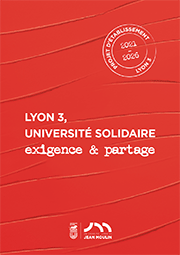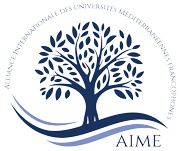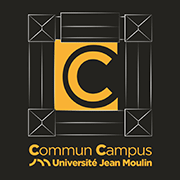AccueilRechercheProgrammes et productions scientifiquesThèsesThèses soutenuesThèses soutenues - 2006-2021Thèses soutenues - 2015
-
Partager cette page
- Recherche,
BLAGA Andrea Maria
Emil Cioran entre poésie et lucidité. Analyse de la traduction fran?aise des ?uvres roumaines de jeunesse
Publié le 27 mai 2015 – Mis à jour le 20 décembre 2018
Thèse en Littérature comparée soutenue le 15 mai 2015 en cotutelle avec l'Université Babes-Bolyai (Roumanie)
Le présent travail portant sur la traduction fran?aise des ?uvres roumaines d’Emil Cioran cherche à réévaluer ou à nuancer certains préjugés liés à l’écrivain ainsi qu’à la traduction littéraire. Nous entendons dépasser les généralisations réductrices, positives ou négatives, du genre : Emil Cioran, ? le plus grand stylisticien du XXe siècle ?, Emil Cioran, l’aphoristicien ou bien le ? mélanomane ? et le nihiliste, en analysant ponctuellement l’écriture cioranienne, notamment celle de jeunesse. Quant à la traduction, nous sommes encline à penser qu’il n’existe pas de ? recette ? prédéfinie applicable à chaque texte. Les traductions très différentes que nous analysons montrent que nous ne pouvons simplement pas choisir une théorie ou l’autre de la traduction et l’appliquer sans discernement et qu’en plus, ces théories, comme par exemple celle de la traduction cibliste et sourcière, de la forme ou du sens, prouvent désormais leur caractère historique. Loin de penser que la théorie et la pratique de la traduction sont deux choses séparées, nous entendons prouver que ce va-et-vient constant que nous réalisons entre théorie et pratique peut s’avérer très fructueux.
L’objectif qui se dessine ainsi est double. D’une part, nous nous proposons de faire une analyse stylistique des ?uvres de jeunesse d’Emil Cioran et de mettre en exergue les mutations qu’a subies l’écriture cioranienne de la période roumaine à la période fran?aise. Nous entendons montrer concrètement en quoi l’écriture a changé et comment cette analyse peut nous aider à mieux saisir l’?uvre de Cioran dans toute sa complexité et son glissement permanent. D’autre part, nous entendons faire une analyse de la traduction fran?aise des ?uvres roumaines d’Emil Cioran. Cela nous donne également l’occasion d’étudier les différents facteurs influen?ant une traduction en accord avec une opinion, largement répandue depuis Henri Meschonnic, de l’historicité de toute traduction.
Les deux objectifs sont clairement visibles à tous les niveaux de l’organisation du travail, dans la structure générale, ainsi qu’au niveau de chaque paragraphe analysé. Toute citation de Cioran est d’abord analysée du point de vue stylistique et toute de suite après du point de vue de la qualité de la traduction. Au niveau macroscopique, le travail est organisé en trois grandes parties. La première, ? Figures typiques dans l’?uvre roumaine d’Emil Cioran ?, constitue une analyse des figures du discours récurrentes dans la première étape d’écriture cioranienne et de leur traduction. Ainsi allons-nous observer que la répétition joue un r?le déterminant dans la période roumaine et que la plupart des autres figures sont également sous-tendues par une forme ou autre de répétition : la paraphrase, la reformulation, la métabole, la gradation et ainsi de suite.
Dans la deuxième partie, ? Les images cioraniennes ?, nous nous intéressons à des unités de discours plus grandes, à savoir les images. Nous avan?ons non seulement vers l’analyse des passages plus amples, mais également vers des théories plus complexes du langage et du texte poétique. Nous dédions trois chapitres séparés à trois concepts clés pour notre analyse : l’ ? image de la pensée ?, l’ekphrasis et la lamentation.
La troisième partie, ? Des images cioraniennes à l’image roumaine de Cioran ?, fonctionne comme une synthèse rassemblant et développant les conclusions des analyses précédentes. Nous comparons cette fois-ci l’écriture des livres roumains et fran?ais et nous soulignons la transformation qu’elle subit non seulement de l’?uvre de jeunesse à celle de maturité, mais également d’un livre à l’autre.
Loin de le situer définitivement dans la catégorie de grand ? aphoristicien ? (? un La Rochefoucauld du XXe siècle ? ? plus fran?ais que les Fran?ais ? selon Pascale Casanova) ou dans celle opposée des nihilistes, cette étude s’est proposé de montrer un Cioran en quête permanente de nouvelles stratégies de compensation esthétiques aussi bien que rationnelles et cognitives et qui fournit, outre une analyse très complexe de nos émotions, une véritable étude de cas de notre manière de faire face aux affects à différents moments de notre vie.
In the present study, which analyzes the French translations of Emil Cioran’s Romanian work, we intend to reexamine and to nuance some of the most common preconceptions about both Cioran and translation. We intend to go beyond such reductive generalizations as “Emil Cioran the greatest stylistician of the 20th century”, the “Aphoristicien” or, on the contrary, “Emil Cioran the nihilist and the depressive writer”, by closely analyzing his early Romanian writing. As for the literary translation, we tend to believe that there is no perfect, predefined “recipe” that we can apply to every text. The different translations we analyze confirm that we cannot simply chose one theory or another and apply it indiscriminately; furthermore, these theories, as for example those having to do with source-oriented and target-oriented translation, now seem outmoded. Far from thinking that the theory and the practice of translation are two separate things, we consider that our study, alternating as it does between theory and practice, can prove to be very fruitful.
Thus, a double-objective is taking shape. On the one hand, we plan to offer a stylistic analysis of Emil Cioran’s early works and to underline the ways in which his writing evolved between his Romanian and French periods. We intend to examine concretely what changes occurred and in what ways this analysis can help us have a better grasp of Cioran’s complex and shifting work.
At the same time, we aim to do a comparative analysis of Cioran’s French translations. This gives us the opportunity to identify the factors influencing the translation process, in keeping with the widely held view associated with Henri Meschonnic, that translations age.
The two goals followed simultaneously in our work are clearly visible at each level of the analysis: in the general structure of the thesis as well as in the organization of smaller divisions. Whenever we study a passage from Cioran’s work, we first examine the stylistic aspects of the original and in the next paragraph the quality of the translation.
The present work is divided in three major parts. The first -- “Recurrent Figures of Speech in Emil Cioran’s Romanian Works” -- comprises a detailed analysis of the most representative figures of speech in the author’s first stage of writing and their translation. We learn from this that repetition, which plays an important role at this point in Cioran’s writing, underlies most of his other frequently used figures of speech: paraphrase, synonymy, gradation, etc. In the second part, “Cioran’s Images”, we analyze larger units of discourse. We move, not only from smaller units of discourse to larger ones, but also from simpler to more complex language and literary theories. We devote three chapters to three key concepts of our study: “thought images”, “ekphrasis” and “lamentations”. The third part, “From Cioran’s Images to Cioran’s Romanian Image”, plays the role of a synthesis that gathers and develops the conclusions of the preceding analysis. In the last chapter, we compare his Romanian and French books, and we underline the evolution of his writing, not only from the Romanian period to the French, but also from one book to another.
Far from placing Emil Cioran in the category of “Aphorists” (“a twentieth-century La Rochefoucauld, more French than the French”, according to Pascale Casanova) or in the company of nihilists, this study wanted to reveal a writer who is always trying to find new compensations on the esthetic level as well as on the rational and cognitive levels and who offers, in addition to a very complex analysis of our emotions, a case study of the way we cope with different affects at different points in our life.
Mots-clés : traduction, auto-traduction, Emil Cioran, répétition, reformulation, image, évolution stylistique, écriture spontanée, ? métaphore vive ?, lamentation, ekphrasis, ? image de la pensée ?
Keywords : Translation, Emil Cioran, self-translation, repetition, reformulation, image, stylistic evolution, “living metaphor”, spontaneous writing, lamentation, ekphrasis, “thought-image”
Directrice de thèse : Florence GODEAU
Membres du jury :
Mme Alexandrina MUSTATEA, Professeur des universités, Université de Pitesti, Roumanie
M. Eric DAYRE, Professeur des universités, ENS de Lyon
M. Laurent MATTIUSSI, Professeur des universités, Université Jean Moulin Lyon 3
Mme Livia TITIENI, Professeur des universités, Université Babes-Bolyai, Roumanie
Mme Yvonne GOGA, Professeur des universités, Université Babes-Bolyai, Roumanie
Mme Florence GODEAU, Professeur des universités, Université Jean Moulin Lyon 3
Présidents du jury : Laurent MATTIUSSI
Yvonne GOGA
Mention : Très honorable
Equipe d'accueil : CEDFL
L’objectif qui se dessine ainsi est double. D’une part, nous nous proposons de faire une analyse stylistique des ?uvres de jeunesse d’Emil Cioran et de mettre en exergue les mutations qu’a subies l’écriture cioranienne de la période roumaine à la période fran?aise. Nous entendons montrer concrètement en quoi l’écriture a changé et comment cette analyse peut nous aider à mieux saisir l’?uvre de Cioran dans toute sa complexité et son glissement permanent. D’autre part, nous entendons faire une analyse de la traduction fran?aise des ?uvres roumaines d’Emil Cioran. Cela nous donne également l’occasion d’étudier les différents facteurs influen?ant une traduction en accord avec une opinion, largement répandue depuis Henri Meschonnic, de l’historicité de toute traduction.
Les deux objectifs sont clairement visibles à tous les niveaux de l’organisation du travail, dans la structure générale, ainsi qu’au niveau de chaque paragraphe analysé. Toute citation de Cioran est d’abord analysée du point de vue stylistique et toute de suite après du point de vue de la qualité de la traduction. Au niveau macroscopique, le travail est organisé en trois grandes parties. La première, ? Figures typiques dans l’?uvre roumaine d’Emil Cioran ?, constitue une analyse des figures du discours récurrentes dans la première étape d’écriture cioranienne et de leur traduction. Ainsi allons-nous observer que la répétition joue un r?le déterminant dans la période roumaine et que la plupart des autres figures sont également sous-tendues par une forme ou autre de répétition : la paraphrase, la reformulation, la métabole, la gradation et ainsi de suite.
Dans la deuxième partie, ? Les images cioraniennes ?, nous nous intéressons à des unités de discours plus grandes, à savoir les images. Nous avan?ons non seulement vers l’analyse des passages plus amples, mais également vers des théories plus complexes du langage et du texte poétique. Nous dédions trois chapitres séparés à trois concepts clés pour notre analyse : l’ ? image de la pensée ?, l’ekphrasis et la lamentation.
La troisième partie, ? Des images cioraniennes à l’image roumaine de Cioran ?, fonctionne comme une synthèse rassemblant et développant les conclusions des analyses précédentes. Nous comparons cette fois-ci l’écriture des livres roumains et fran?ais et nous soulignons la transformation qu’elle subit non seulement de l’?uvre de jeunesse à celle de maturité, mais également d’un livre à l’autre.
Loin de le situer définitivement dans la catégorie de grand ? aphoristicien ? (? un La Rochefoucauld du XXe siècle ? ? plus fran?ais que les Fran?ais ? selon Pascale Casanova) ou dans celle opposée des nihilistes, cette étude s’est proposé de montrer un Cioran en quête permanente de nouvelles stratégies de compensation esthétiques aussi bien que rationnelles et cognitives et qui fournit, outre une analyse très complexe de nos émotions, une véritable étude de cas de notre manière de faire face aux affects à différents moments de notre vie.
In the present study, which analyzes the French translations of Emil Cioran’s Romanian work, we intend to reexamine and to nuance some of the most common preconceptions about both Cioran and translation. We intend to go beyond such reductive generalizations as “Emil Cioran the greatest stylistician of the 20th century”, the “Aphoristicien” or, on the contrary, “Emil Cioran the nihilist and the depressive writer”, by closely analyzing his early Romanian writing. As for the literary translation, we tend to believe that there is no perfect, predefined “recipe” that we can apply to every text. The different translations we analyze confirm that we cannot simply chose one theory or another and apply it indiscriminately; furthermore, these theories, as for example those having to do with source-oriented and target-oriented translation, now seem outmoded. Far from thinking that the theory and the practice of translation are two separate things, we consider that our study, alternating as it does between theory and practice, can prove to be very fruitful.
Thus, a double-objective is taking shape. On the one hand, we plan to offer a stylistic analysis of Emil Cioran’s early works and to underline the ways in which his writing evolved between his Romanian and French periods. We intend to examine concretely what changes occurred and in what ways this analysis can help us have a better grasp of Cioran’s complex and shifting work.
At the same time, we aim to do a comparative analysis of Cioran’s French translations. This gives us the opportunity to identify the factors influencing the translation process, in keeping with the widely held view associated with Henri Meschonnic, that translations age.
The two goals followed simultaneously in our work are clearly visible at each level of the analysis: in the general structure of the thesis as well as in the organization of smaller divisions. Whenever we study a passage from Cioran’s work, we first examine the stylistic aspects of the original and in the next paragraph the quality of the translation.
The present work is divided in three major parts. The first -- “Recurrent Figures of Speech in Emil Cioran’s Romanian Works” -- comprises a detailed analysis of the most representative figures of speech in the author’s first stage of writing and their translation. We learn from this that repetition, which plays an important role at this point in Cioran’s writing, underlies most of his other frequently used figures of speech: paraphrase, synonymy, gradation, etc. In the second part, “Cioran’s Images”, we analyze larger units of discourse. We move, not only from smaller units of discourse to larger ones, but also from simpler to more complex language and literary theories. We devote three chapters to three key concepts of our study: “thought images”, “ekphrasis” and “lamentations”. The third part, “From Cioran’s Images to Cioran’s Romanian Image”, plays the role of a synthesis that gathers and develops the conclusions of the preceding analysis. In the last chapter, we compare his Romanian and French books, and we underline the evolution of his writing, not only from the Romanian period to the French, but also from one book to another.
Far from placing Emil Cioran in the category of “Aphorists” (“a twentieth-century La Rochefoucauld, more French than the French”, according to Pascale Casanova) or in the company of nihilists, this study wanted to reveal a writer who is always trying to find new compensations on the esthetic level as well as on the rational and cognitive levels and who offers, in addition to a very complex analysis of our emotions, a case study of the way we cope with different affects at different points in our life.
Mots-clés : traduction, auto-traduction, Emil Cioran, répétition, reformulation, image, évolution stylistique, écriture spontanée, ? métaphore vive ?, lamentation, ekphrasis, ? image de la pensée ?
Keywords : Translation, Emil Cioran, self-translation, repetition, reformulation, image, stylistic evolution, “living metaphor”, spontaneous writing, lamentation, ekphrasis, “thought-image”
Directrice de thèse : Florence GODEAU
Membres du jury :
Mme Alexandrina MUSTATEA, Professeur des universités, Université de Pitesti, Roumanie
M. Eric DAYRE, Professeur des universités, ENS de Lyon
M. Laurent MATTIUSSI, Professeur des universités, Université Jean Moulin Lyon 3
Mme Livia TITIENI, Professeur des universités, Université Babes-Bolyai, Roumanie
Mme Yvonne GOGA, Professeur des universités, Université Babes-Bolyai, Roumanie
Mme Florence GODEAU, Professeur des universités, Université Jean Moulin Lyon 3
Présidents du jury : Laurent MATTIUSSI
Yvonne GOGA
Mention : Très honorable
Equipe d'accueil : CEDFL
Documentation
Mise à jour : 20 décembre 2018







